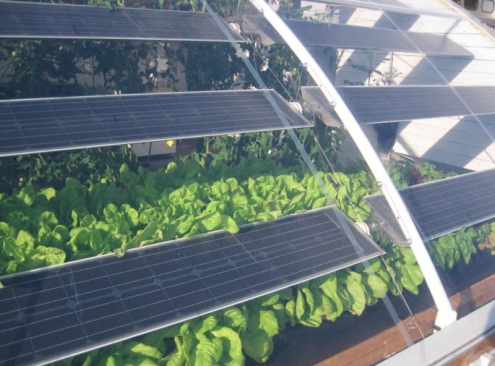
NAIROBI: Agriculture has progressed from the centuries old traditional systems that faced few challenges and required fairly little skill and knowledge to produce.
To be competitive and profitable, modern-day agribusiness operations increasingly require investments in technology, knowledge and skills. Numerous technologies including machines, tools and softwares that can significantly increase efficiency and profitability in agribusiness are available, especially in key areas of energy, water and finances.
Energy is a major requirement for farm machinery, cooling and refrigeration, heating, drying and processing activities. The source of energy can have significant implications on business success if costly or unreliable. Possibilities include renewable energy sources such as biogas, solar, wind, biochar or energy derived from agricultural waste. Export markets are especially conscious of the amount of carbon dioxide and other carbon compounds released from use of fossil fuels during agricultural operations. This parameter, also called the carbon footprint, can hinder access to lucrative market opportunities, if it is too high. In agribusiness, the carbon footprint challenge presents an opportunity to explore alternative cleaner energy sources that can be more reliable and affordable.
DRIP IRRIGATION
Water saving technologies are another important area. Precision discharge devices such as drip irrigation kits, chicken or animal drinkers that can be calibrated and located to release a predetermined amount of water at specified times, or strictly on demand, can be used to eliminate wastage. Filtering technologies can be used to clean and recycle water that has not been contaminated with harmful polluting chemicals or microorganisms. Ofcourse, these measures could achieve much more when combined with appropriately selected crop varieties and livestock breeds, and closely matched with efforts to harvest and store water during periods of plenty.
ICT applications present a rich resource that can be harnessed to further enhance efficiency in agribusiness operations. Affordable and easy to install electronic devices that automate water discharge, temperature regulation, security surveillance and access control, among other operations, can increase precision and reduce costs of hired labour. Timers with sensors can be installed to cut out water or turn off heat or lighting after specified time periods or climate thresholds have been attained. For both water and energy, ensuring use is tagged to demand is an effective way of reducing wastage, enhancing efficiency and profits. To be effective, technology need not be advanced or complex. For example, in developed countries intelligent electronic surveillance systems are being deployed to monitor crop pests and trigger interventions (for example pesticide applications) only when population reaches threatening levels. As comparison, in Kenyan small scale farms, simple hormone based, colour or light emitting insect traps can achieve the same purpose and near equivalent precision but at much lower cost.
When making decisions, one can choose technologies with multiplier effects. For example, ICT applications have revolutionised access to information and knowledge, market linkages and access to financial services, among other benefits. As a secondary effect, ICT has increased awareness and stimulated uptake of other technologies. Based on the profile and credibility established through mobile phone-based financial transaction platforms, many agribusinesses are now able to better demonstrate profitability and sustainability, thus debunking the myth of agriculture being higher risk business, and in the process have accessed loans and services that would have been previously impossible to get from banks.
The above examples show that when properly selected and appropriately applied, technology can be a faithful and dependable servant in agribusiness. However, as with all good things, technology can have a downside that needs careful consideration. Not all operations in agribusiness are ready for technology application, and further, certain functions must be performed using the human hand. Therefore, to perform optimally, technology should be effectively interfaced with well trained people, otherwise it can be underutilised or abused, and in the process compromise efficiency and profitability. A common mistake in agribusiness is to think that technology can replace human input, and especially the supervisory or management functions.
This misconception, often associated with what is commonly called ‘telephone farming’, has led to the downfall of many noble enterprises. Generally, the mistaken association of agriculture with low skill and knowledge hinders uptake and use of technologies. To successfully translate agriculture to agribusiness, it is wise to focus on the business part of the word, keeping in mind that agriculture is the arena. With this mindset, a forward looking investor will commit resources to training to ensure better interfacing between personnel and technology. Depending on nature of agribusiness, the initial investment in technology can be high but this should not deter entrepreneurs from exploring and committing resources. When well thought out, the returns of investing in technology will outweigh the costs by far.
The writer is the Director, Grant Writing and Management, and teaches at the School of Agriculture and Enterprise Development at Kenyatta University
 The Standard Group Plc is a
multi-media organization with investments in media platforms spanning newspaper
print operations, television, radio broadcasting, digital and online services. The
Standard Group is recognized as a leading multi-media house in Kenya with a key
influence in matters of national and international interest.
The Standard Group Plc is a
multi-media organization with investments in media platforms spanning newspaper
print operations, television, radio broadcasting, digital and online services. The
Standard Group is recognized as a leading multi-media house in Kenya with a key
influence in matters of national and international interest.
 The Standard Group Plc is a
multi-media organization with investments in media platforms spanning newspaper
print operations, television, radio broadcasting, digital and online services. The
Standard Group is recognized as a leading multi-media house in Kenya with a key
influence in matters of national and international interest.
The Standard Group Plc is a
multi-media organization with investments in media platforms spanning newspaper
print operations, television, radio broadcasting, digital and online services. The
Standard Group is recognized as a leading multi-media house in Kenya with a key
influence in matters of national and international interest.






